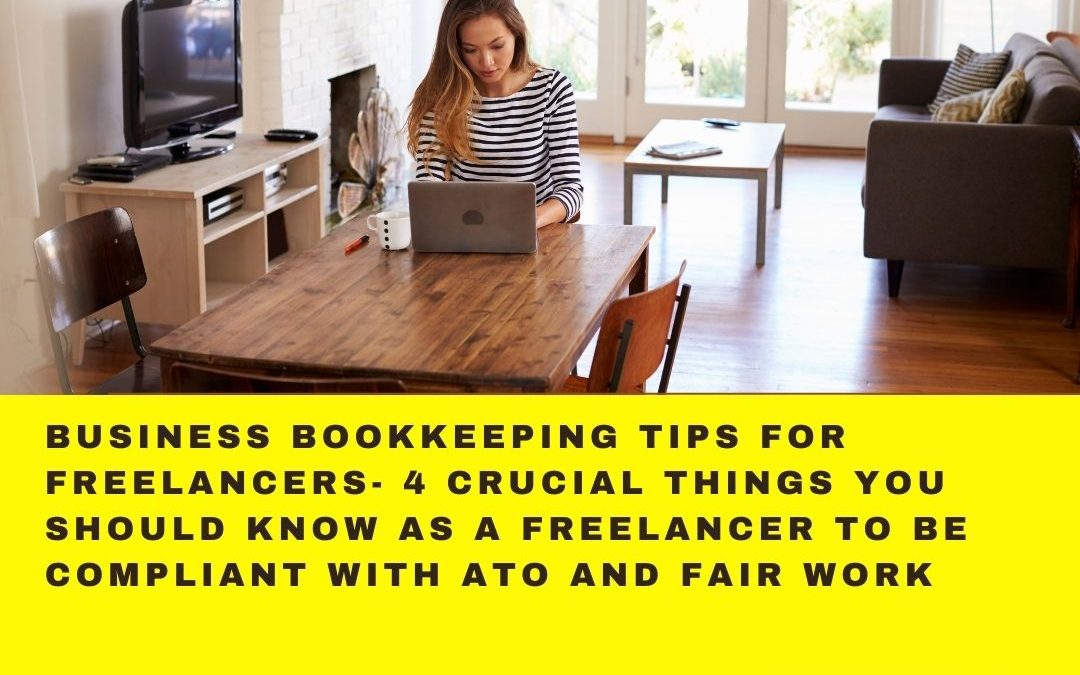Helping You Keep Your Freelance Business on the Right Side of the ATO
If you’ve been following our freelancing series, you’ll already know the pros and cons of freelancing, plus have some ideas of jobs you can do from home. In this, the fourth and final blog in this series, we’re giving you some tips to ensure your freelance business is compliant on a financial level.
We all have to answer to someone, and for Australian freelancers, it’s the Australian Tax Office (ATO). As an employee in a traditional 9-5, you only ever have to worry about filing your tax returns and maybe tracking your expenses or kilometres, depending on your role.
But when you’re the boss, you have a whole lot more to do. It can be extremely confusing, but never fear! Your friendly neighbourhood bookkeeper is here to hand-deliver the most important things you should know about keeping on the right side of the ATO.
Since most freelancers are sole traders, we’re going to focus on that aspect. Exploring all the differences between companies, sole traders, and other business formats could fill a textbook or 10 (believe me, I’ve read them), so we’re going to keep it simple.
For more information on your obligations if your business is a company, see the business.gov.au website.
Please note that all advice is generalised, so if you have any specific queries, feel free to contact me via my website.
This blog will cover reporting, compliance, and some of the obligations required for a sole trader.
1. What You Should Do When Starting Your Freelancing Business
Before you even start your business, you should register for an Australian Business Number (ABN). The application process is an easy one via the Australian Business Register (ABR). This is a legal requirement.
You will also need to decide if you want to trade on a cash or accrual basis. This means you either include it in the tax return for the tax year that you did the work or the tax year you got paid or if you are registered for GST it means what BAS it should be included in.
You’ll also need to decide if you want to register for Goods and Services Tax (GST). It’s not a legal requirement until your business has a turnover of $75, 000 (gross income minus GST) or if you expect to hit that threshold in the first year of business. It doesn’t cost anything to register and is active until you cancel it.
Whether or not you’re reporting profit or loss, you will need to lodge an annual income tax return. This is also the case whether or not you’re above or below the tax-free threshold.
Our compliance blog has a lot of helpful information about GST registrations and thresholds.
2. Registering Your Business Name
Your business name is one of the most crucial aspects of starting your freelance business. Besides the obvious rules you have to follow- nothing offensive, profane, or already in use- you must also consider the image your name projects to your customers. This is the name you and your business will be known by, so don’t take the task lightly.
You can choose to operate under your own name or a name of your choosing. For example, I am a sole trader but operate under the Sudoku Bookkeeping business name. You can register for a business name through the Australian Securities & Investments Commission (ASIC), and some reasonable fees apply.
3. GST & BAS REPORTING
As mentioned above, you will need to register for GST if you expect to turn over $75,000 for the financial year. If you have registered for GST, you will need to submit a BAS (Business Activity Statement) on a monthly, quarterly or annual basis. We advise that you register to report quarterly for cash flow purposes.

dance your worries away
4. EMPLOYEES AND PAYROLL
As a sole trader, you can not employ yourself in the business but can employ as many staff as you need.
You’ll need to register as a Pay As You Go (PAYG) witholder with the ATO if you choose to do so. You will also have superannuation contribution guarantee obligations, including paying 10% superannuation into your employees’ chosen super fund.
As an employer, you will need to obtain a default super fund to ensure obligations are met if an employee does not provide their choice of superannuation fund details.
Alternatively, you can engage sub-contractors or freelancers. You will need to ensure that the contractors have a valid ABN and are registered for GST if they’re charging for tax on their invoices.
A sole trader’s income from the business is derived by drawings. These drawings are recorded as “owner drawings” in the accounting software so the tax agent can see exactly how much money you have received from the business, income received, and expenses incurred. This will help them calculate your income tax returns.
This is covered in more detail in our previous blog about payroll compliance.
While we’ve covered several aspects and things to think about when considering becoming a sole trader, this is by no means an entirely comprehensive guide. There are many aspects to think about, but we hope that the information in these blogs will help when considering your next step.
Also, remember that I’m a bookkeeper, not a guidance counsellor, so if you’d like more information about keeping your freelance business compliant, click here to make an appointment.

